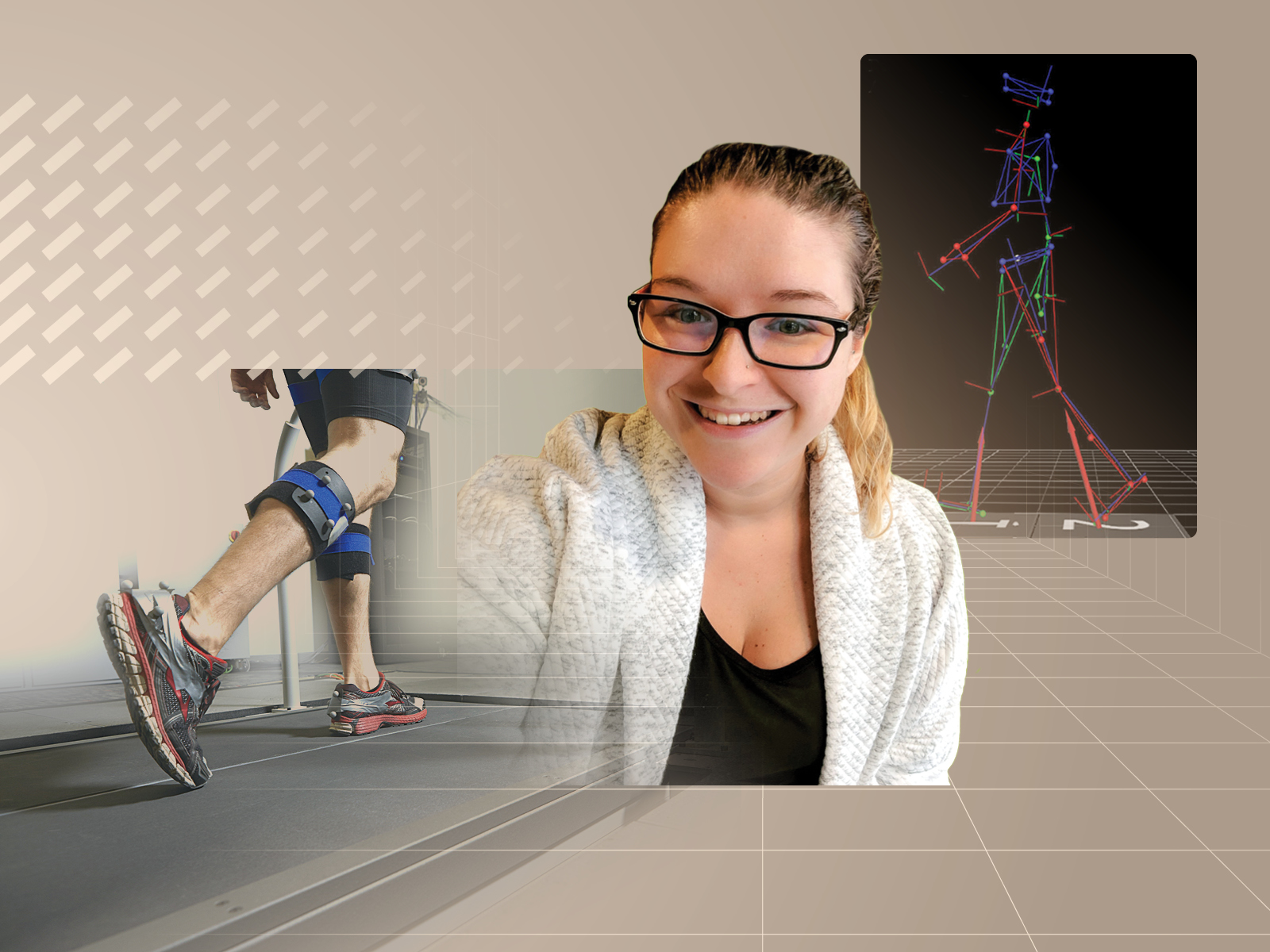 HHP - Update me in site_config > General Configuration
HHP - Update me in site_config > General Configuration

pictured: Francesca Wade, Ph.D., postdoctoral researcher in applied physiology and kinesiology
by Manny Rea
Studying the physiological differences in walking adaptability between younger and older adults is helping researchers understand the parts of the body affected and how to address quality of life and health issues as these parts weaken with age.
Catching the last-minute bus to work. Carrying that hot cup of coffee around to the office. What seem like routine tasks are actually powered by the complex motor movements of the body. Walking the dog or getting around the supermarket requires mobile adaptability — the ability to adjust to changing environments and walking speeds. This ability begins to reshape or diminish with age depending on one’s health.
Literature on the differences in walking adaptability between age groups remains limited. But researchers from the Applied Neuromechanics Laboratory in the Department of Applied Physiology and Kinesiology have stepped up through a collaborative effort from departments across UF for the paper Kinematic analysis of speed transitions within walking in younger and older adults.
Francesca Wade, Ph.D., is a postdoctoral researcher in applied physiology and kinesiology and the primary author of the study. She joined HHP after earning her doctorate and is co-advised by Chris Hass, Ph.D., professor in applied physiology and kinesiology, and David J. Clark, associate professor in the Department of Physiology and Aging.
Wade joined HHP equipped with research knowledge in sport injury and more specifically ankle sprain injury. For her Ph.D., she studied the ankle joint structure during ankle replacement in older adults and now explores the effects of aging on mobility.
Last year, Wade contributed to ongoing research at Hass’ Applied Neuromechanics Lab by collecting biomechanical data as part of a larger project funded by the National Institute of Aging.
The institute granted five labs at UF, including Hass’ lab, the Mind in Motion grant which has helped support a plethora of research involving human movement. Wade’s data collection and analysis stems from the countless data produced over the years thanks in part to the grant.
Research participants of various ages were measured for different health factors such as blood flow, electrical potentials and brain activity and were studied using motion capture and other scans as they conducted 16 unique mobility tasks. Wade focused on analyzing and creating code for the motion capture of participants' increasing and decreasing walking speed transitions.
Here, Wade found that plenty of research had been done on athletes, runners and younger people and how they adjust to changing speeds while running on a treadmill. But little had been conducted using walking and on older populations. Targeting this demographic would help develop knowledge of the parts of the body, including the ankles and hips, that are used for these transitions in speed and how health issues can be addressed when these parts weaken with age.
For example, an older adult who experiences a fall may feel apprehensive about leaving the house and entering a crowd where they may require the mobile adaptability that they no longer have or is limited, she said.
“Being able to independently move yourself around the world goes a long way in having a good quality of life,” Wade said.
Wade worked with previous data by creating a method to track the center of mass velocity, or how fast the center of one’s body is moving, and analyzing changes in walking speeds. She was also able to conduct her own research by using motion capture to track participants walking on treadmills and by signaling them to slow down and speed up at different times. These instructions simulated braking and propulsion in one’s gait, or manner of walking.
“Pushing yourself forward and then slowing yourself down happens all the time,” she said. “Whenever you need to speed up at a crosswalk or slow down because someone pushed their shopping cart in front of you, you’re reacting to your environment.”
She would find through her research that younger adults use their entire lower leg, including the ankles, knees and hips, to drive deceleration and acceleration while older adults relied more on their hips. Older adults also have greater dorsiflexion (the lifting of the foot) and lesser knee flexion (bending of the knee).
The next step, though, is to determine where this difference stems from whether it be muscle activation or gravitational forces. However, for now, Wade feels confident that the research has helped make headway into recognizing the physiological differences older people undergo when walking in daily life and how their health issues can be addressed by professionals.
read more >>